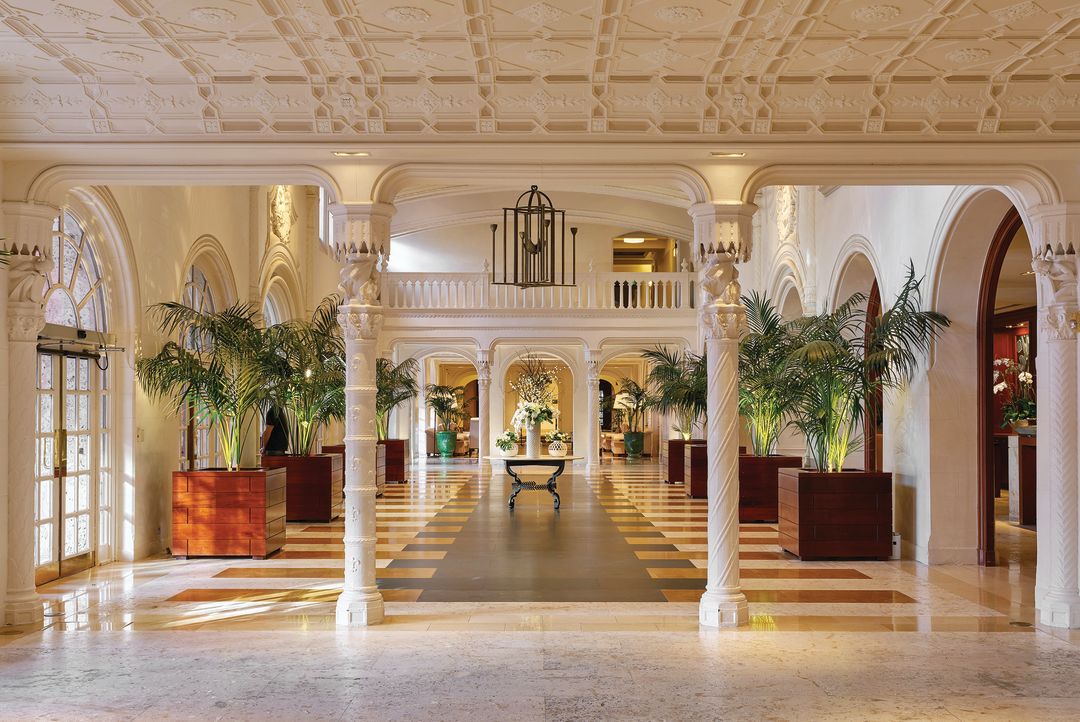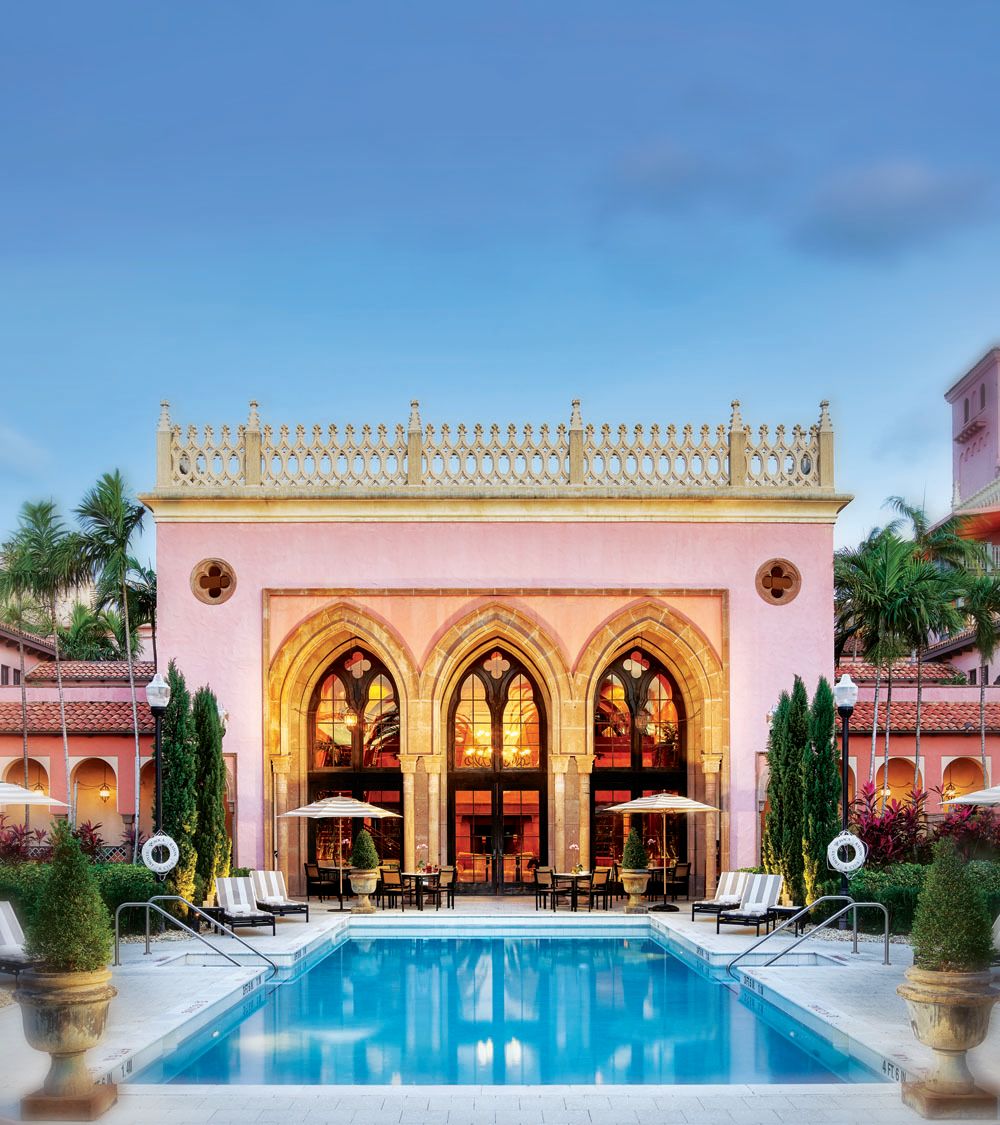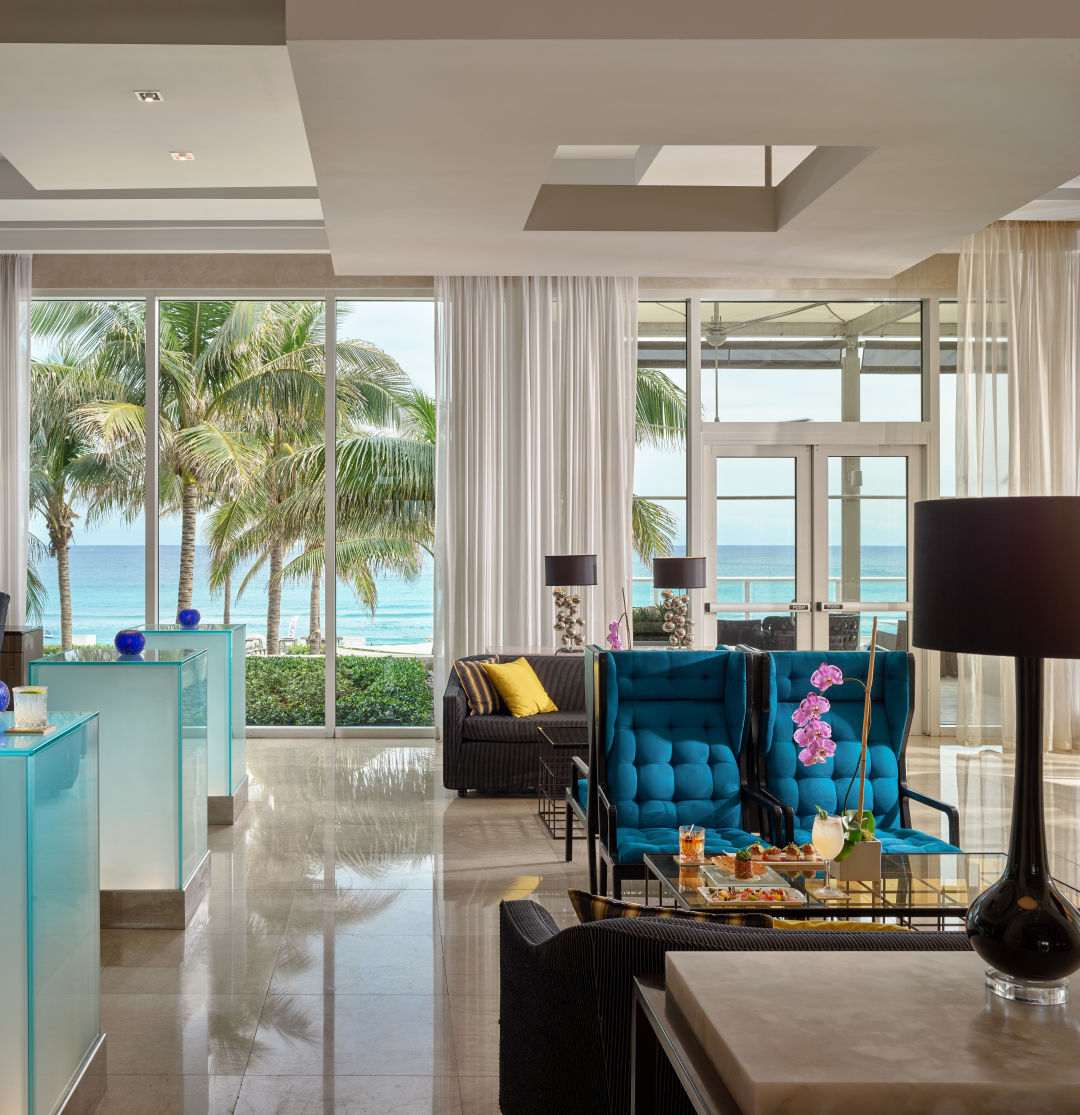Luxury and History Collide at Boca Raton Resort & Club

The Boca Raton Resort & Club
Image: Courtesy Photo
You can’t write the history of Boca Raton without writing the history of the Boca Raton Resort & Club.

The Boca Raton Resort & Club, circa 1940.
Image: Courtesy Photo
Today, the massive luxury property is part of the Waldorf Astoria empire, but when it opened in 1926, it was called the Cloister Inn, the name a nod to the hotel’s architecture, which was inspired by a Spanish convent built in the 11th century. When the hotel opened, Boca Raton was little more than an isolated farm town, a dot on the map between then-booming Palm Beach and Miami, and the hotel struggled. Just a year after the Cloister Inn opened, the property was foreclosed on, and Addison Mizner, the legendary architect who designed the project, went bankrupt.
Over the next century, waves of construction, teardown and redevelopment washed over the property, evidence of which you can still see today. The check-in desk is located to the left of the original entrance to the hotel, but to get to your room, you’ll pass through stately, Spanish-style halls that boast original details, and to catch the boat that will ferry you to the beach, you’ll stroll through cloisters that offer shaded views of Lake Boca Raton, a bulge in an intracoastal channel that separates the main spread of the resort from the Boca Beach Club.
Builders knocked down a corner of the original inn in 1967 for a regrettable 27-story hotel tower, still the tallest structure in Boca Raton, and later added a tennis and fitness center, a world-class spa modeled after the Alhambra in Granada, a beach club, a yacht club, residential units and more.

"Blue hour" in Boca Raton
Image: Courtesy Photo
Stay in the original Cloister Inn section if you can. Despite the many decades of guests who have come and gone, the rooms are as modern and spotless as you’d expect at any luxury resort, and the view across the gardens in the morning will have you dreaming of Havana or San Juan.
As a teenager, Mizner spent a year in Central America, where his father served as a political appointee in Guatemala, Honduras, El Salvador and Nicaragua. His exposure to the Spanish language, colonial art and architecture and the tropical flora and fauna inspired his own sensibility. The resort’s older sections bring to life a bygone era of Caribbean luxury—a blend of humid air, storm-beaten stone and rooms with long, dark shadows in which to escape the sun.

The resort's pool area
Image: Courtesy Photo
In contrast to that throwback vibe, the resort’s spa is all about state-of-the-art relaxation, and is one of the property’s major attractions. Set far away from the bustle of the lobby, in a quiet, restricted-access zone, it promises rejuvenation in 50- or 80-minute bursts. The Ritual Bath treatment, for example, is a prescribed series of nine different mineral baths, plus showers, a whirlpool, a steam room, a sauna and inhalation rooms.
If your idea of relaxation runs more toward lying slug-like on the beach, catch the 10-minute ferry ride to the Beach Club, where you can lounge on the sand or nap next to the pool. It might seem ridiculous to drive from Sarasota to Boca Raton to hang out on the beach, but my wife and I did just that, lazing away underneath broad umbrellas and alternating between a good novel and nodding off.

The resort’s modern-styled Beach Club offers sand-side luxury.
Image: Courtesy Photo
After a difficult day doing nothing, it’s time to eat. The resort includes a number of options, the most refined among them Lucca, an upscale ristorante that lets you spy the twinkling lights of yachts and condos through Venetian-style Gothic archways. No surprise, the specialty here is pasta, with a rotating menu that also incorporates polenta and risotto dishes.
Mizner loved monkeys and kept several as pets (his favorite, Johnnie Brown, “The Human Monkey,” is interred in Palm Beach). The resort nods to Mizner’s affection for primates with Monkey Bar, an intimate and expensive-but-worth-it craft cocktail hangout only open in the evenings. It’s a perfect spot for a nightcap before strolling the grounds. Wander down near the lake to marvel at the yachts (almost as large as the resort itself) or saunter to the near-silent garden near the golf course, where a colossal kapok tree rises several stories. Kapoks can live for three centuries, and it’s easy to imagine this one standing right here for almost that long, watching as Boca Raton grew from idle backwater to global tourist destination.
Boca Raton Resort & Club | 501 E. Camino Real, Boca Raton, (561) 447-3000, bocaresort.com | Rooms start around $318 a night. | Drive time from downtown Sarasota: 3 ½ to 4 hours
Things to Do
Delve into the Boca Raton Museum of Art
With a permanent collection of more than 4,500 works that runs from pre-Columbian to contemporary, the Boca art museum is a terrific destination if the weather turns sour. If you’re heading there this year, don’t miss Beyond the Cape!, which showcases the work of pioneering underground comic artists like R. Crumb. bocamuseum.org
Explore the Gumbo Limbo Nature Center
Located on 20 acres on a protected barrier island, Gumbo Limbo offers a boardwalk, nature trails, a butterfly garden, outdoor marine aquariums and more. Florida Atlantic University biology researchers also use the facility, and the public can get a glimpse of their work. Summer and fall are popular times to visit because of the adorable sea turtle hatchlings. gumbolimbo.org
Stroll the Morikami Museum and Japanese Gardens
In the early 1900s, a group of Japanese farmers established the Yamato Colony just a little northwest of modern-day Boca. Today, the colony is long-gone, but Morikami, located on the site of the former outpost, celebrates Japanese culture with a mix of art shows and workshops and a tranquil lakefront garden. morikami.org



